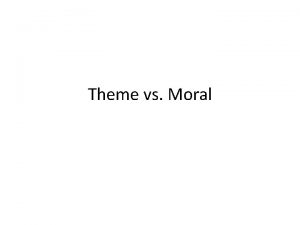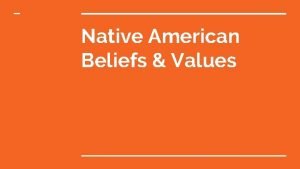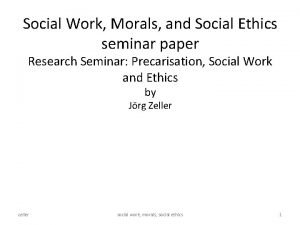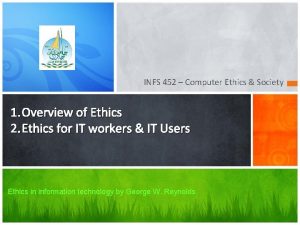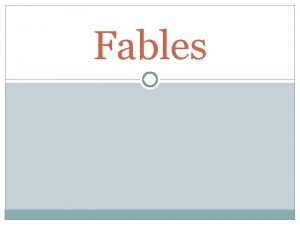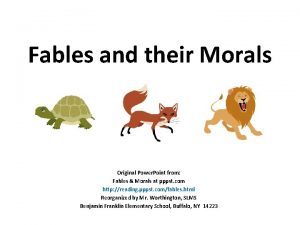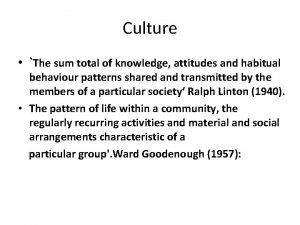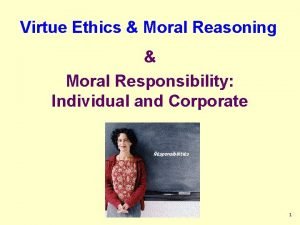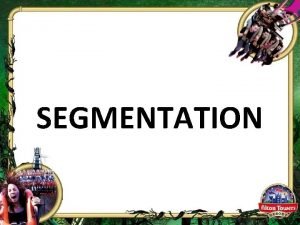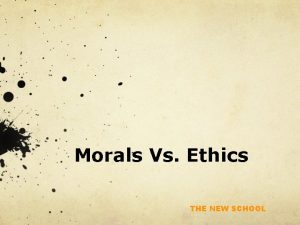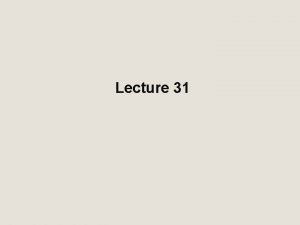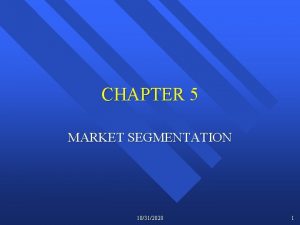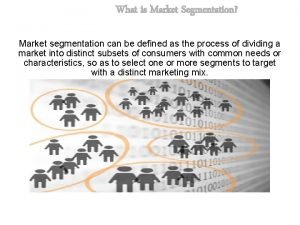SEGMENTATION Market Segmentation P 5 Competency Focus Morals













- Slides: 13

SEGMENTATION

Market Segmentation P 5

Competency Focus Morals & Ethics (C 1): Pupils will explore whether it is morally right or wrong for businesses to target certain consumers in order to sell their products.

Learning Objectives By the end of today’s lesson, you should be able to… LO 1) Describe what is meant by market segmentation (Guided – Regular) LO 2) Explain the benefits of market segmentation to a business in marketing its products (Regular – Strong) LO 3) Analyse the differences between B 2 B and B 2 C segmentation (Strong – Advanced)

KEY TERMS Business-to-Business (B 2 B): When one business sells a product to another business. Business-to-customer (B 2 C): When a business sells products to consumers. Purchasing Decision: Series of choices a consumer will make before buying a product. Demography: Study of the population and how this changes over time.

LO 1) What is Market Segmentation? “Breaking down a market into sub-groups with similar characteristics” (Hall et al, 2008, p. 29) Imagine an orange. . .

PROCESS: MARKET RESEARCH (To find out who is interested in buying your product) MARKET SEGMENTATION (Break down market into sub-groups) TARGETING

LO 2) Benefits of Market Segmentation Task: In your groups, write down all the benefits of segmenting the marketing into sub -groups for a business. Think about what type of learner you are when working in a group situation!

What type of learner are you? Autonomous You are highly motivated during lessons. You research deep into the subject using a variety of sources, and use your researched information to explain and analyse the underlying meanings and morals of myths and legends. You are a natural group leader, who helps and has a positive and successful effect on your group tasks. You have a determination to succeed, and always identify areas to improve, as well as suggesting ways to do this. Advanced You have a positive attitude and motivation during lessons. You research into the subject using more than one source, and use this information to take out key points about the meanings and morals of myths and legends. You volunteer to take on roles within your group, and help other students with their work. You are eager to improve, and use your WWW and EBI’s to do this. Strong You enjoy lessons and show a positive attitude and motivation. You research using more than one source, and can pick out the main points about myths and legends. You volunteer to take on roles within your group, and can help other students with their work. You are eager to improve, and can identify both strengths within your learning, as well as areas that you could work on. Regular You are motivated to achieve in your lessons. You tend to research using a preferred way of finding information, but can pick up some main points about myths and legends. You may need guidance when taking on roles within your group, and sometimes need support on how to apply research to learning. Guided With guidance, you can understand how motivation can help you to achieve in your lessons. With support, you can make decisions about how important your researched information is. You need guidance from your group leaders when taking on roles within your group, and benefit from support on how to apply research to learning.

B 2 C Types of market segmentation: - Graphically (where they live/ use of ACORN/MOSAIC models) - Demographically (gender/age/social class/income) - Psychographically (lifestyle/personality) - Behaviourally (how they act i. e. Impulse buyers/seek luxury) Lead learners to research ACORN/MOSAIC models

B 2 B Decision-making unit (DMU): All the staff that participate in the purchasing decision making process in a business i. e. Managing Directors, Purchasing Director/Suppliers etc How are businesses segmented? - Size & value - Region - Public/private/voluntary sectors - Product/Industry

GROUP TASK Each group is given a copy of Alton Towers case study. Pupils work in groups to present responses to the following questions: • • Who are the customers targeted by AT? How can these customers be classified? Do you think there any B 2 B customers of AT? These are the figures for 2010, do you think this will remain the same for 2011. If not how will it change and why?

Plenary Porsche Car Direct Line Home Insurance City-living new apartments Cadbury’s chocolate bar Popcorn New ride at Alton Towers Deodorant
 Requirements for effective segmentation
Requirements for effective segmentation Differentiation business level strategy
Differentiation business level strategy Actor focus vs object focus
Actor focus vs object focus Focus on form vs focus on forms
Focus on form vs focus on forms Cost focus and differentiation focus
Cost focus and differentiation focus Theme or moral
Theme or moral Native american morals and values
Native american morals and values Seminar paper
Seminar paper Morality vs ethics
Morality vs ethics Difference between ethics and morals
Difference between ethics and morals Fables short
Fables short Mouse and lion story moral
Mouse and lion story moral Culture is sum of
Culture is sum of Moral duties
Moral duties





